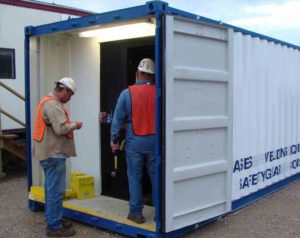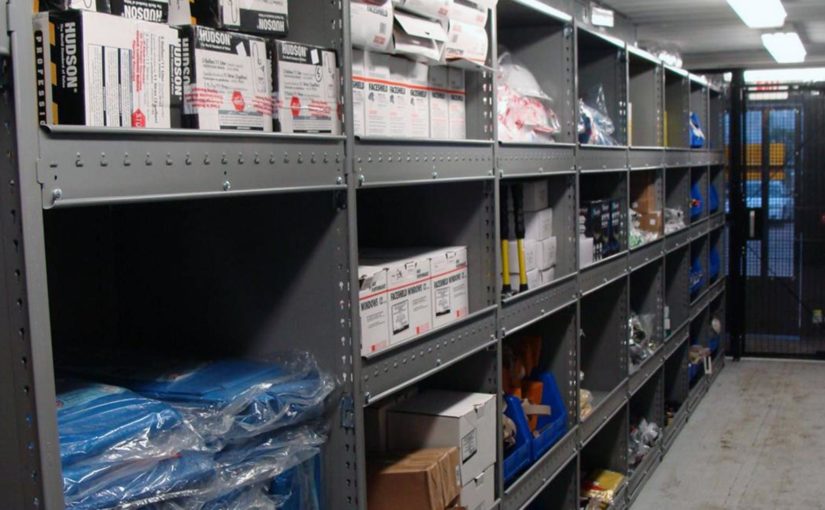If you thought vending machines solely existed to dispense soft drinks and candy, you’d be wrong. Anyone who has ever worked on a construction site will recognize the concept of automated vending machines; they’ve been around for a long time. Some are small enough to fit on a tabletop, while others are much larger and utilize a 53-foot-long Conex trailer. The vending machines of today can now dispense and track products of any size as well as provide insights and analytics on usage, spend and when to reorder.
A New Way to Track Inventory
It all started with a client inquiry: “They asked for vending machines inside of a trailer,” said Jason Vetterick, Vice President of Construction Markets at Airgas. “But instead of [dispensing] candy and snacks, they wanted it to have gloves and other small items. We thought—instead of vending machines inside of a trailer, we could convert the entire trailer into a walk-in vending machine with the job site environment in mind.”
 Now the concept is going 21st century, providing insights and data analytics on the job site. Rather than keeping small, disposable, loose items in a large container, where they can easily be lost, these walk-in automated vending solutions provide a streamlined way for general contractors or construction managers to track equipment usage and inventory. This is an unmanned resource that allows workers to have immediate, around-the-clock access to material on-site and enables companies to track and manage usage of supplies without hiring additional staff.
Now the concept is going 21st century, providing insights and data analytics on the job site. Rather than keeping small, disposable, loose items in a large container, where they can easily be lost, these walk-in automated vending solutions provide a streamlined way for general contractors or construction managers to track equipment usage and inventory. This is an unmanned resource that allows workers to have immediate, around-the-clock access to material on-site and enables companies to track and manage usage of supplies without hiring additional staff.
Efficiency and productivity are just some of the benefits that walk-in automated vending solutions bring to customers. These machines allow almost any consumable product to be dispensed—from hard hats and drill bits to welding supplies and chemicals. For projects that require larger items, walk-in automated vending provides added security and visibility into who’s using the supplies and how often.
“If anyone goes into the trailer and takes excess materials, there will be a report of it,” explained Vetterick. “Maybe it’s something that person is doing that’s inefficient, which is why they need all of those supplies—[automated vending] helps raise questions on productivity and tracks spend with complete visibility plus data analytics.”
Data Matters
Utilizing the internet and intelligent data, everything from stock replenishment to inventory management becomes streamlined and more intuitive. For example, most automated vending systems will generate a daily report that supervisors can closely monitor in order to reduce equipment deficiencies and carrying costs. As companies continue to operate in an increasingly tight economy, a 25-40 percent savings on inventory equipment cost can only help the contractor’s bottom line.
“[Walk-in automated vending] can save [customers] a significant amount of time and labor costs,” Vetterick noted. “It takes the stress and the worry from the supply chain aspect and provides control and minimizes leakage. When you add all of these things together, it saves a lot of money. But it’s not just a cost-savings driver; it is, at the same time, something that gives them peace of mind and reliability.”
